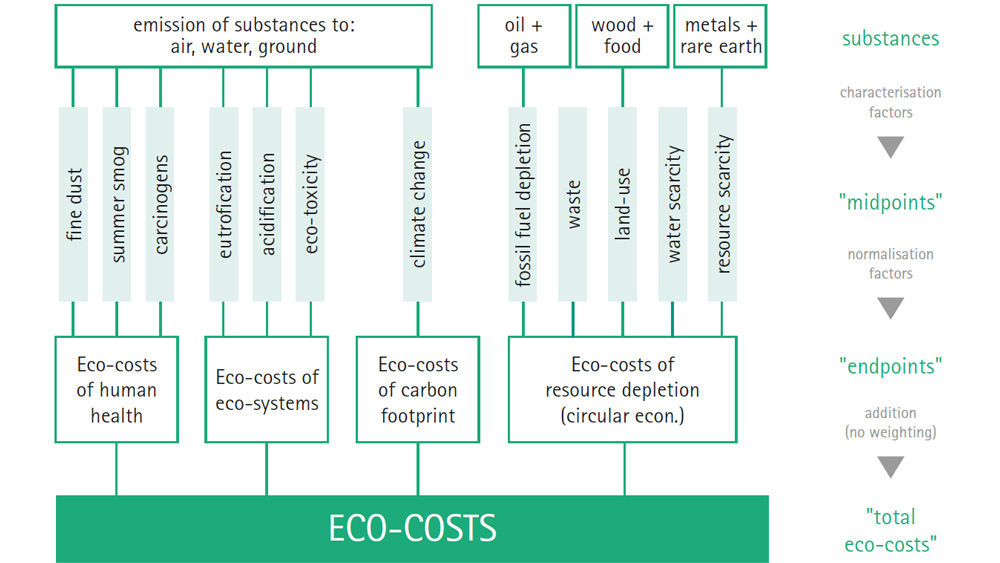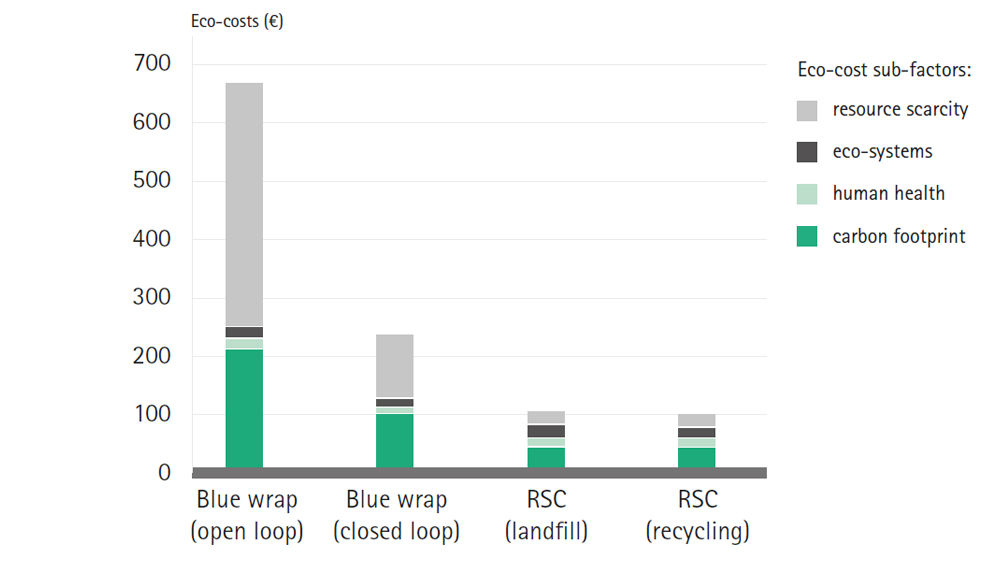No content results match your keyword.
Content
You have successfully logged out.
Not registered yet?
No content results match your keyword.
Content
No product results match your keyword.
Products
What are eco-costs?
Healthcare opinion leaders are increasingly calling for value-based methods of health care cost accounting that “consider the public health effects of pollution from activities up and down the supply chain…(and) incorporate environmental performance into decision-making”. [1]
The idea here is that “the external costs of a product should be added to (its) economic costs to enable a fair comparison in product benchmarking between a cheap but polluting product and a “clean” product.” [2]

Eco-costs (determined on the basis of the above diagram) are used to compare the sustainability of different product types with the same functionality.
These factors of an eco-cost analysis provide a full life-cycle assessment (LCA) of a product based on its mass and energy balance in conformity with ISO 14040 and ISO 14044 for LCAs.
Eco-costs are expressed as a standardized monetary value. As such they are not an indication of the actual costs incurred in using a product, but rather provide a standardized way of quantifying and comparing environmental impact on the basis of a life cycle assessment.
The eco-cost comparison model shows that blue wrap has a decidedly higher environmental impact over 5,000 sterilization cycles in comparison to rigid sterile containers. [3]

As shown in the diagram above, the eco-cost calculation is made up of four different factors: resource scarcity, eco-systems impact, human-health impact and carbon footprint.
In the blue-wrap vs. RSC comparison a calculation was made for “open loop” use of blue wrap (which means disposal without recycling) and “closed loop” use (which means full recycling of blue wrap after use).
In both cases, the eco-costs for blue wrap use are significantly higher than the two use cases considered for RSCs (final disposal in landfill or with recycling of the container materials). Use of blue wrap over 5,000 use cycles results in eco-costs of €669.11 without recycling (= open loop) and €232.68 with recycling (= closed loop). By comparison, the eco-costs for RSCs over 5,000 use cycles are €104.02 with landfill disposal.
According to this comprehensive sustainability metric, RSCs are distinctly preferable to blue wrap over the full product life cycle of the respective sterile goods processing methods.
[1] Sherman, Jodi & MacNeill, Andrea & Thiel, Cassandra. (2019). Reducing Pollution From the Health Care Industry. JAMA. 322. 10.1001/jama.2019.10823.
[2] Friedericy, H.J.; van Egmond, C.W.; Vogtländer, J.G.; van der Eijk, A.C.; Jansen, F.W. Reducing the Environmental Impact of Sterilization Packaging for Surgical Instruments in the Operating Room: A Comparative Life Cycle Assessment of Disposable versus Reusable Systems. Sustainability 2022, 14, 430. https://doi.org/10.3390/su14010430
[3] Friedericy, H.J.; van Egmond, C.W.; Vogtländer, J.G.; van der Eijk, A.C.; Jansen, F.W. Reducing the Environmental Impact of Sterilization Packaging for Surgical Instruments in the Operating Room: A Comparative Life Cycle Assessment of Disposable versus Reusable Systems. Sustainability 2022, 14, 430. https://doi.org/10.3390/su14010430
Your feedback matters! Participate in our customer survey to help us enhance our website, products and services. Thank you for your support!